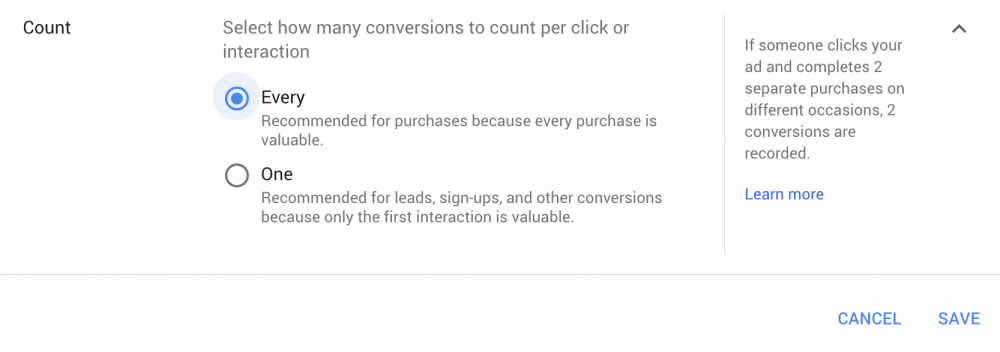E-Commerce PPC Case Study – How We Reduced Cost Per Lead By 85%
In this PPC analysis, we will demonstrate how we took one current campaign, reduced the lead costs by over 85%, avoided spending thousands on promotions, and increased the monthly lead count by six times.
Do you want to know how we did it?
In this post, I will break down the methods which allowed us to create a successful campaign after failing. I will also be showing you ways of how to incorporate them into your Google Ads PPC campaigns.
Let’s get started!
Background
Our client’s business sells high-end specialty home goods, which have items that cost around more or less $5,000 and above, so this is a profitable market.
They have an e-commerce website with a wide range of items available. Because it is a high-end industry, most consumers never purchase online; instead, they usually talk to someone to pair them with an ideal product.
They asked for assistance from us to lower their lead costs and increase their lead volume while also preserving lead quality.
The Audit – Huge Opportunities Uncovered
Google Ads is the world’s most powerful ad platform, but it has also become one of the most sophisticated.
Google’s primary purpose is to extract as much money from you as possible without regard for your ROI.
…But that’s where we come in.
The first thing we always do is an audit of the account.
We are searching for:
- Current information to acquire ideas (what works and what does not)
- Mistakes in the account or setup that lead to poor conversions.
100% of the time, no exaggeration, we find opportunities that can be improved.
To set a baseline, this is what the account appeared like when it was turned over to us, before any work being done:

Cost: $2,020
Conversion Rate: 0.34%
Conversions: 5
Cost Per Conversion: $403
Immediately we noticed that the conversion rate is only 0.34%, which is relatively low, and the value per conversion is significant compared to what is expected.
Here are a couple of things we did immediately to relaunch this campaign:
Know Exactly Where Every Cent Is Going With Proper Tracking
Tracking and data are the backbones of a properly set up campaign.
You won’t decide what to maintain, reduce, or scale if you don’t know what campaigns are genuinely working.
The issue here is that it’s very tricky to set it up correctly unless you’re an expert.
We discovered that conversions like “All Page Views” and other options like “Count Every Conversion” on this account, was causing a lot of false data throughout the years.
For instance, with the “Count Every Conversion” setting, if you click an ad once and opt-in three times, it counts three leads when we only have one lead in reality. This is OK for purchase conversion campaigns but not great for lead gen.

You see? There are landmines everywhere!
Here is our solution:
We created all new triggers and tags in Google Tag Manager. We then sends the data to Google Analytics and Google Ads.
We use Google Tag Manager in every account we work on to collect all the data in one location so that everything is correctly organized.
If there are any issues, it is very simple to track down, and we only need to add one tracking code, Google Tag Manager, to our websites.
Increasing CTR With Streamlined Ad Groups & Ad Copy
In Google Ads, you have “ad groups,” which contain many catchphrases that you are bidding on and the ad content that will be shown when people search for those phrases.
When visitors search for a specific term, they are seeking something particular and need a solution.
However, when a generic ad appears, it may not match exactly what they are looking for, which might increase your expenditures because your CTR (click-through rate) is too low.
We discovered that several of the ad groups in this account were utilizing the same generic ad.
This is a big opportunity because one ad can’t show the differences in each product and highlight the specific product’s benefits or characteristics.
Here’s how we fixed it:
We developed brand-new ads with unique headlines and descriptions that referenced the exact seed keyword.
Because of the importance of the user experience, this is one of the most critical phases in creating a high-converting campaign.
You don’t want anyone googling for “oil changes near me” and seeing an ad for “tire rotations.”
It isn’t very sensible and won’t attract much traffic.
Applying this adjustment enhanced the ad relevancy score and improved the user experience for what they were looking for.
From these major optimization steps and our daily management, these are the results we saw by the end of June, 2019.

Cost: $1,690
Conversion Rate: 0.42%
Conversions: 7
Cost Per Conversion: $241
With only these few tactics, you can see that the cost per conversion has fallen by more than 40% from the start.
But that doesn’t end there.
Increasing Conversions With Landing Pages
Profitable campaigns need a multifaceted strategy. It’s often not just what is set up in the account but also what happens after the ad is clicked.
We regularly find people sending traffic to their website. Still, that page isn’t as optimized as it could be for the conversion they want.
When you have a lead gen campaign to your regular website, it is typically cluttered with distractions such as navigational menus and content. It is unclear to people what you want to accomplish.
When a visitor comes to a page, you have to make it obvious what you want them to accomplish and remove unnecessary distractions.
This is where landing pages come into play.
Landing pages are designed mainly to generate conversions once an ad is clicked, and it may make a huge difference in how well a campaign works!
A landing page has a single primary CTA (Call To Action). The page text is centred on the client’s avatar and the specific keywords you’re competing on. There are no links to other pages.
How We Resolved It
To kick this campaign up a few more notches, we needed a dedicated landing page.
We’ve run millions of dollars in ad spend in the last few years, and one thing is for sure: most people are BURNING money by not making use of high-converting landing pages.
So we began with one of our hallmark landing pages, which encourages visitors to opt-in to view their current inventory and pricing.
And the outcome?

Cost: $1,820
Conversion Rate: 1.19%
Conversions: 32
Cost Per Conversion: $56.90
Conclusion
We were able to reduce their CPL (Cost Per Lead) by more than 85% by building a focused landing page, setting up accurate tracking, optimizing the campaign using our specialized method, and establishing a focused landing page.
| April 2019 (Pre-Snap PPC) |
June 2019 (Snap PPC) |
July 2019 (Snap PPC) |
| Work Done: None (Pre-Snap) |
Work Done: Basic Restructure Campaign Optimization |
Work Done: Advanced Optimization Custom Landing Pages |
| Cost: $2,020 Conversion Rate: 0.34% Conversions: 5 Cost Per Conversion: $403 |
Cost: $1,690 Conversion Rate: 0.42% Conversions: 7 Cost Per Conversion: $241 |
Cost: $1,820 Conversion Rate: 1.19% Conversions: 32 Cost Per Conversion: $56.90 |
The best part is that we’re not done yet.
We have a variety of methods to employ and take this campaign even further as we collect more data since we perform daily management and constant optimization.
Additionally, as long as this client can handle the volume, we can work to scale it to the moon – all while maintaining a healthy CPL and lead quality.
Start Growing your Business Today!
Sign up for free and get access to all of our tools and services.


